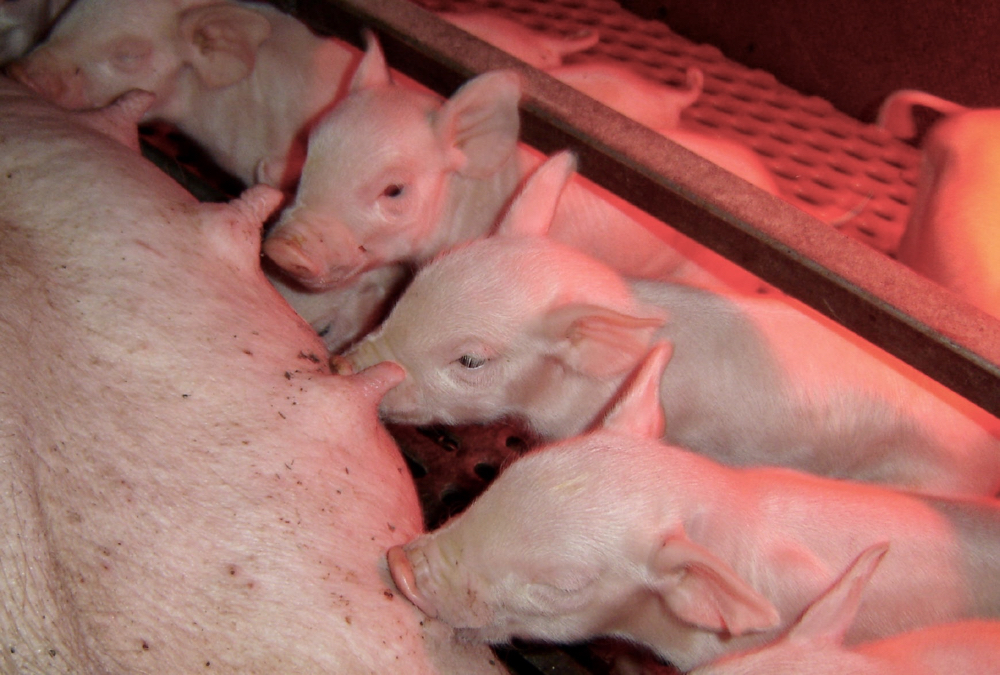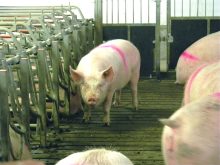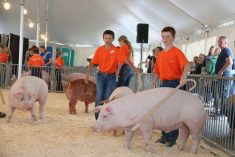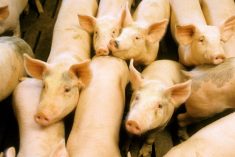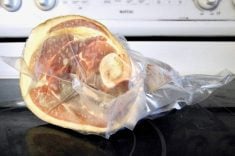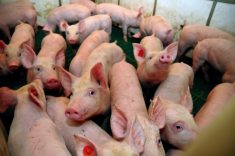In December of 2014 the Canadian Pork Council decided to update and review the Canadian Quality Assurance (CQA) program to continue supplying foreign markets with high quality Canadian pork.
Five years and an extensive process later, on April 1, Canadian Pork Excellence (CPE) was launched. It is a national platform demonstrating Canadian pork producers’ commitment to high standards in food safety, animal welfare and traceability practices.
Why it matters: Sixty per cent of Canadian pork products are exported. The Canadian pork industry needs to maintain these markets and differentiate itself from the rest of the countries Canada competes with to meet the potential and expectations of foreign and domestic markets.
The CPE program covers three major components, PigTrace, PigSafe and PigCare.
PigTrace covers traceability, an important part of Canada’s public trust communications and enables the Canadian production to better trace disease outbreaks and pork products.
The PigSafe component covers food safety and is modeled the same as the Hazard Analysis and Critical Control Points (HACCP) in the CQA program.
PigCare is the new name for the Animal Care Assessment program and accounts for the revisions of the 2014 Code of Practice for the Care and Handling of Pigs.

“The nice thing about this platform is you can have one audit which covers each of [these components], where before you would have a CQA validation audit, and animal care audit, ractopamine, and pig trace happening on the side,” says Frank Wood, manager, Industry and Member Services with Ontario Pork. “It’s trying to put everything under one umbrella, making it easier to manage on the farm, and in the industry for that matter.”
The initial launch was scheduled for January, 2016 but pork producers in Ontario and other provinces voiced concerns, including about a lack of input. Provincial organizations agreed to do a re-evaluation and chose pilot farms to implement the program and figure out what did and didn’t work, placing the launch on hold.
Read Also

Canada seventh-most influential country on agri-food
Report from Dalhousie University and MNP shows Canada ranks seventh among G20 countries on agri-food influence.
Within Ontario, 26 farms were chosen for the pilot program of all different sizes and markets; from 10 sows to 30,000 sows, organic producers, niche markets, commercial producers and pigs raised outdoors.
The pilot program was implemented to look further into and understand the financial impact of CPE, the amount of work involved, the value of training employees and having consistency with the training and ensure the farmers received the “best bang for their buck”.
“[Producers felt] they weren’t taken into account with the first program, when the original draft of the program came out. Now we are confident it represents each of the groups and it also allows the sustainability of the traditional farmers, the niche players and the commercial operations,” says Wood.
The program runs on a three-year cycle. The first year is the producer’s complete on-site validation – where the validator goes through each barn with the producer/site manager. The following two years focus more on the paper work with a paper audit and interview questions.
One of the biggest changes from the CQA program to the CPE is precision in documentation and training, both of which add structure to the program.
The CPE program provides documentation outlining what exact information is required and all employees are to be signed off on training and have a reference for standard operating procedures around tasks ensuring animal care.
“The struggle will be for producers who have never done [SOPs and sign-offs], a lot of time is needed to invest up front and once they are done, they need to be kept current – the upfront work can be overwhelming and that was one of the biggest shocks to our producers,” says Wood.
The CPE program proves to foreign and domestic markets that Canada continues to have high quality products and is competitive with other markets.
“The success and risk of our business is that we export most of our pork products. We need to take the steps to make sure we maintain the integrity and set ourselves apart and keep that competitiveness going. We do a good job, we have a good story and this is the part of proving it and demonstrating we have a standard across the entire country,” says Wood.
Program an asset, says farmer
TJ Murray, a pork producer finishing 38,000 hogs per year in Hickson, Ont. says the program is an asset to the Canadian pork industry as it helps producers to organize their operation in a more business-like manner.

“I’m a strong believer that the agriculture industry needs to become more business forward and grow out of the old fashioned farm outlook. Having the operating procedures and protocols within this program, that we didn’t have before, I’m glad for that from a liability standpoint and for my employees in general,” says Murray.
Murray had two facilities within the pilot project and has one facility fully validated – the first one in Ontario and Canada – approximately six more to be validated within six months and the rest to be validated within a year and a half.
When the program was first tried in 2017, Murray says he was about 80 per cent against, but now is 100 per cent for the program, although there are still a few things he thinks may be a struggle for Canadian producers and the industry.
“Cats in a barn are a ‘no-no’ unless they’re taken care of – updated with vaccinations, spayed and neutered. We take care of our pets, but how can we ensure the cats which are dropped off in the ditch are spayed and neutered? We are ensuring that no cats enter our barn and we have it completely sealed but I think the industry will continue to struggle with this one.”
Murray says he has already invested almost 100 hours into putting together the SOPs, and estimates about five to eight hours of inspections per site. He says the time invested and the cost associated with that time is already proven to be higher than the current CQA program.
“I think in the long haul all the work will be worth the extra time investment, but short term I don’t think producers will see the added value. There’s no one other than yourself to assume the cost. It’s not like our pigs are initially worth $3 more with the extra paperwork, but at the end of the day it does make our pigs worth more because you are on the program; it’s a pro and a con for the producer, but it’s a good thing for our industry.”




